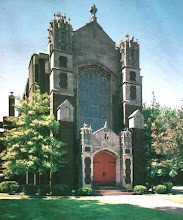
Readers of the Plain Dealer will not have missed the news, but I want to help spread the word that the East Wing of the Cleveland Museum of Art is open for regular hours beginning on Saturday. It's a perfect "staycation" destination, or a place to visit before heading to a park or a farmer's market, or even just a nice break from yard work.
The space is devoted to more contemporary art, but that includes work stretching back into the 19th century so don't worry: it isn't all just paintings of colored dots or Pollock-esque splatters. In fact, I was thrilled to discover that the museum has one of my favorite Rodin sculptures the Age of Bronze in the southern most room of the new wing.
I've seen several castings of the work, including one in New York's Metropolitan Museum of Art and the Minneapolis Institute of Art. In fact, when I lived within walking distance of the MIA I would visit the museum at least monthly and always stop by to see this statue. To me, it's an enigmatic work. Is the figure in agony or ecstasy? Is the left hand holding something? Does the lack of an object in that hand symbolize something lost? Is there a glimmer of hope? My little art history helps me spot the contrappasto stance Rodin chose, and the goofy side of me wonders if the model simply forgot to have his V-8. In short, it makes me laugh and think - what all great art should do. (By the way, I've done a fair amount of research on the sculpture so I do know the "right" answers to some of these questions. But I wouldn't want to spoil the experience of interpretation for you. After all, sometimes personal experiences of art should trump the artists and the academics - a position I'm sure Umberto Eco would be proud of!)
So much of art history is based on religious symbolism and understanding. After all, Michelangelo's Pieta is meaningless if you can't instantly realize that it's Christ and Mary being depicted. Knowing the lives of saints and Greek myths adds layers of understanding to a visit to a museum. In other words, remember that church isn't the only place to learn more about religion, and music isn't the only art that aids our understanding. On returning to church on Sunday, you might even observe the stained glass windows in a new way.


In education, we call this "contextualizing" an expeerience. It means finding the meaning through a combination of one's one experiences with knowledge about the intent of the person who creates a work of art. So, there are different ways to understand, just like each of us has a unique understanding of God. We combine our experience with what we know about the Bible. The more we know, the deeper our understanding. Watch out for the people who claim to have the "truth" about art or religion, because their "truth" may not be yours.
ReplyDelete